Spotlight on Climate Change
By gofb-adm on Sunday, May 1st, 2022 in Issue 1 - 2022, Environment No Comments

By gofb-adm on Sunday, May 1st, 2022 in Issue 1 - 2022, Environment No Comments
2021 was a significant year in terms of climate change. Extreme weather patterns, floods and droughts alike shook the world. A ground-breaking report by the Intergovernmental Panel on Climate Change (IPCC) moved the United Nations Secretary General to describe the year as “a code red for humanity”.
We saw world leaders coming together to address climate change with the US joining the all-important Paris Agreement; the environment ministers of G7 countries renewing their climate agreement; and NATO, the world’s most powerful defence alliance, discussing climate change for the first time at its Leaders’ Summit.
These efforts resulted in major commitments being made towards protecting wildlife and the environment, including a ban on the use of plastic; steps against the use of fossil fuels; and intentions expressed to achieve net-zero emissions of greenhouse gases (GHGs) as soon as possible and by 2050 at the latest.
Despite moves in the right direction, the G20’s 2021 Climate Transparency Report published in October told another story altogether. It stated that the world’s richest nations, responsible for around 75% of global GHG emissions, are still not on track to limit global warming, despite raising ambitions.
EU ambitions
The European Union (EU), a significant contributor to carbon emissions and an important global player in the fight against climate change, rolled out ambitious plans in 2021. In June, it issued the European Climate Law, as part of the European Green Deal, for Europe to become climate neutral by 2050.
Under this, intermediate targets were set to reduce net GHG emissions by at least 55% by 2030 – this is known as the ‘Fit for 55’ package and includes provisions for a Carbon Border Adjustment Mechanism.
Also released as part of the package was the revised Renewable Energy Directive, which bans the use of palm oil and talks about using sunflower oil as an alternate biofuel which is produced in Europe. The reason stated for the ban on palm oil is that it ‘contributes to extensive deforestation in Indonesia and Malaysia’.
The initiative, though, ignores the impact on vulnerable communities in developing countries. The upcoming ban on palm oil will affect the livelihood of thousands of smallholders, who make up a substantial percentage of producers.
It also disregards the high productivity of the oil palm, which produces more oil per hectare than other vegetable oil crops. As per the 2018 study by the International Union for Conservation of Nature, the oil palm produces up to nine times more oil per unit area than other major oil crops. Palm oil, the report says, produces 36% of food oil globally on just 8.6% of the land dedicated to food oil production. Rapeseed produces four to 10 times less oil than palm oil per unit of land and requires the use of more fertilisers and pesticides. More than that, it stores less CO2 than palm oil.
The answer to finding a balance between the needs of palm oil producers and the protection of forests may lie in a proposal by the European Commission. Published in November 2021, the ‘Proposal for a regulation on deforestation-free products’ acknowledges for the first time that voluntary schemes have been ineffective in achieving the required outcomes; it also strongly supports legally-binding certification of commodity crops as an effective policy measure to curb deforestation.
Both pre-regulation impact assessment and public consultations – which received nearly 1.2 million responses from stakeholders – showed clear support for legally-binding measures, including mandatory public certification schemes.
Malaysia is already ahead of the game in this regard. In 2015, it launched the Malaysian Sustainable Palm Oil (MSPO) standard, a national certification scheme that is enforced by the government for sustainable oil palm cultivation and palm oil production. It has since been made mandatory.
The MSPO has achieved commendable outcomes in guaranteeing that the palm oil produced is sustainable across the supply chain, with 93% of all the sector having achieved certification to date. In addition, Malaysia has reduced deforestation levels for four consecutive years. But the question remains: When will the EU pay heed to this?
Deforestation and global food systems
Another area that received attention in 2021 was deforestation and global food systems. At the end of 2021, the IPCC Working Group I report, ‘Climate Change 2021: the Physical Science Basis’ was published; it highlights that global temperatures will likely rise 1.5 degrees Celsius by around 2030.
The UN Climate Change Conference (COP26) was held in Glasgow from October to November 2021, with a worldwide focus on the same goals and priorities. Leaders from 110 nations signed a pledge to eliminate deforestation by 2030.
It also focused on the need to limit investments in contributing projects, and to implement restrictions against tree removal to make room for animal grazing and growing of crops like soybean, cocoa and oil palm.
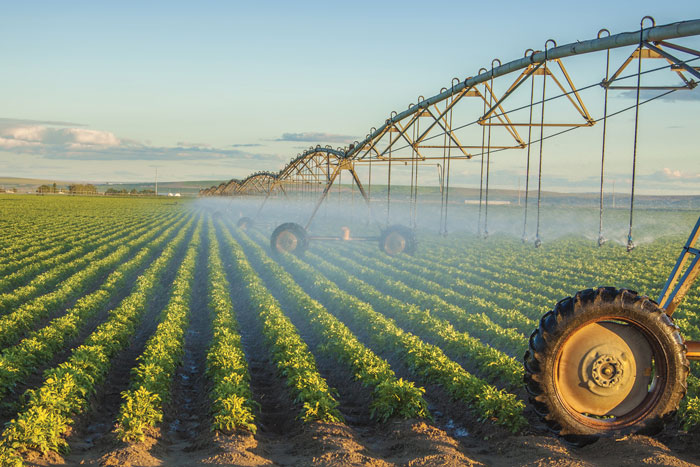
The Forest, Agriculture and Commodity Trade Dialogue, held ahead of COP26, brought together the largest producers and consumers of internationally traded agricultural commodities (such as palm oil, soybean, cocoa, beef and timber) to promote trade and development, while simultaneously acting to protect forests and other ecosystems.
Additionally, global food systems – and their relationship to climate change – received a new level of attention in 2021. It became a major topic of discussion in light of several significant new government commitments at COP26. The UN Secretary- General’s Food Systems Summit, which took place during the General Assembly in September, featured food and agriculture both as a sector heavily affected by the climate crisis and as a major source of GHG emissions.

As global attention to food and climate issues grows, farmers – especially smallholders in the poorest countries – will need much more attention and support to weather the challenges they face on the front lines of the climate crisis in 2022. The battle against climate change is a global priority and would best be solved through cooperation and partnership.
Taking the pledges made at COP26 forward, increased collaboration is required between palm oil producing countries and buyers to ensure that global markets reward practices that promote sustainability and disincentivise damaging practices. The need is that the commitments made throughout 2021 are translated into legislative action within 2022-23, with transparency, accountability and involvement of indigenous peoples and local communities from the Global South particularly.
The main development to monitor in 2022 will be IPCC’s sixth assessment cycle with its three reports – these will contain the most up-to-date scientific assessment on the impacts of climate change and its potential solutions. Its results will deeply influence and help shape the global climate conversation toward COP27.
While 2021 was full of studies, reports, policies and promises around climate change, not all were fulfilled or paid heed to. Progress in 2022 will, among other things, depend on greater North-South collaboration and sincere partnerships.
Centre for Sustainable Palm Oil Studies
This is an edited version of the article which is available at:
https://thecspo.org/2021-in-review-global-environmental-developments-future-of-palm-oil/
By gofb-adm on Sunday, December 19th, 2021 in Issue 4 – 2021, Environment No Comments
In March 2021, the World Resources Institute (WRI), a global research non-profit organisation operating since 1982, issued its annual ‘Global Forest Review’. They found that 12.2 million ha of tree cover was lost in 2020 – a 12% increase from 2019.
Sadly, nearly one-third of that loss occurred within tropical primary forests which are crucial to storing carbon and maintaining biodiversity – these are among the world’s best chances of mitigating climate change.
For the second year in a row, Brazil topped the list of nations that experienced staggering primary forest loss. The country lost nearly 1.7 million ha to fires and clear-cutting. Not only was this loss a 25% increase from 2019, but it was also three times higher than the second country on the list: the Democratic Republic of Congo.
Although most of the primary forest loss in Brazil occurred in the Amazon, the Pantanal – the world’s largest tropical wetlands – experienced 16 times more primary forest loss, as land was cleared for development projects, agriculture and cattle pastures.
The WRI data, provided by scientists at the Global Land Analysis and Discovery laboratory at the University of Maryland in the US, clearly denotes that key targets were missed in 2020 and that deforestation rates are climbing to new highs. Now, more than ever, we must reimagine our policies and economies in a way that protects forests.
Against this backdrop, though, the declining national deforestation rate in Southeast Asian nations like Malaysia and Indonesia provided a rare glimpse of hope for the world’s forests.
While Brazil’s deforestation increased dramatically, Malaysia’s forest loss was reduced – its rate fell from sixth-highest on the list to ninth in just one year. This was the steepest drop registered by any nation on the list, and followed a trend that Malaysia has been setting for four years.
According to the report, government actions are in part to be credited for this downward trend. In 2019, Malaysia began a five-year cap on plantations, as well as increased the fines and jail terms for illegal logging, in accordance with stringent adherence to forestry laws.
Corporate commitments from the pulp, paper and palm oil sectors also played a substantial part in the rollback of forest loss. Currently, 83% of palm oil refining capacity in Malaysia and Indonesia come under the No Deforestation, No Peat and No Exploitation commitments, all of which have helped the producer nations decrease deforestation.
The progress in Malaysia has also specifically coincided with the implementation of the Malaysian Sustainable Palm Oil (MSPO) certification scheme. Under this programme, a moratorium on oil palm expansion has been enforced to protect 50% of forest cover, while ensuring that all palm oil is 100% sustainable.
In this context, disinformation that discredits palm oil, or policy-decisions like that of the EU – to phase palm oil out of the bloc’s biofuels market by 2030 – must be rejected, especially as they appear to overlook the progress and efforts that developing nations like Malaysia have put into keeping forests healthy and commodity-production sustainable.

Blanket restrictions unacceptable
Only a few days before the WRI report was launched, researchers from the Chalmers University of Technology in Sweden and the University of Louvain in Belgium conducted a robust analysis of more than a thousand proposals on curbing imported deforestation.
These proposals originated from open consultations and workshops, where the EU gathered ideas from companies, interest groups and think tanks, to put together the most potent and politically feasible policy framework that can effectively address issues of imported deforestation.
The findings of the study, titled ‘Eighty-Six EU Policy Options for Reducing Imported Deforestation’, cautioned against imposing blanket restrictions on commodities. Instead, the researchers recommended that importers be held accountable and responsible by requiring them to carry out and prove due diligence throughout the product’s supply chain.
The study also encouraged conducting multi-stakeholder forums, which includes companies, politicians and civil society groups, for decision making pertinent to the removal of a supply chain, commodity or area of deforestation. Including more affected parties would lead to wider acceptance of policies.
The researchers also proposed measures to balance the trade-off between the proposed policy’s effect and its feasibility. For instance, they recommended pairing trade regulations – that tend to hit poorest countries the hardest – with provision of aid, so that nations can pursue sustainable production.
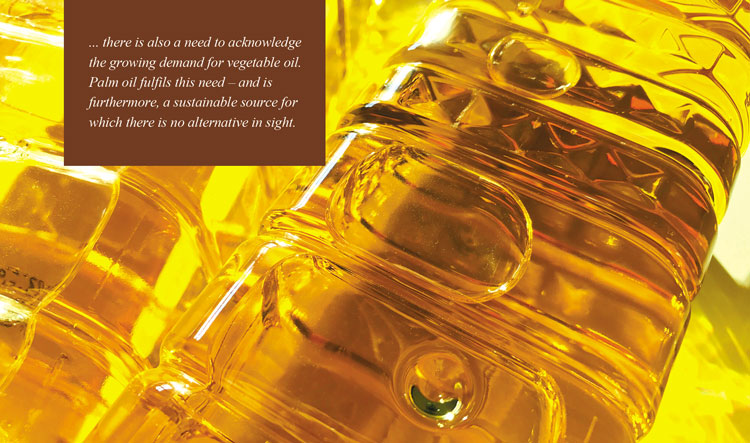
This could also help reduce the risk of unsustainably produced goods being exported to regions other than the EU. For instance, China, which is the world’s second-largest palm oil importer, recently gave investors access to the palm oil trade with no stipulations for sustainability. This is dangerous and will result in creating what is known as a ‘leakage market’, which could end up derailing efforts like the MSPO.
The reality of our food cycle is that the world is highly dependent on palm oil. It contributes, for example, to the diet of half of humanity and provides a livelihood for millions of smallholder farmers.
The oil palm is the most efficient of vegetable oil crops – yielding the most oil while using the least amount of land. This is why it is important to work with palm oil producers to balance growing demand with innovation that safeguards the natural world.
But we must acknowledge existing flaws. While Southeast Asian states have raised hopes in the fight against deforestation, the global trend paints a grim picture. Total carbon emissions resulting from forest loss in 2020 alone equaled 2.64 Gt – equivalent to the annual emission of 570 million cars, more than double the number of vehicles currently on US roads.
These realities are a stark reminder that efforts by Malaysia and Indonesia, while commendable, will only succeed when the comity of nations comes together. National policies will continue to have the most impact on forests – but, without global cooperation, the impact may remain limited in the face of climate change.
The Centre for Palm Oil Studies
This is an edited version of the article available at: https://thecspo.org/southeast-asian-countries-provide-hope-for-global-forests-world-resources-institute/
By gofb-adm on Saturday, October 3rd, 2020 in Issue 3 - 2020, Environment No Comments
The European Union (EU) has unilaterally stepped up action to ‘protect’ forests worldwide, without first sufficiently addressing deforestation in its own backyard. This is despite the fact that its forests account for just 38% of the total land area today.
The global forest area declined from 31.8% in 1990 to 30.8% in 2016. In contrast, Malaysia’s forests still cover about 55% of the land area. Following a decline of its forest area between 1990 and 2005, there was a laudable recovery by 2016 to the 1990 level due to action spearheaded by the government.
In July 2019, the European Commission (EC) adopted a ‘Communication on Stepping up EU Action to Protect and Restore the World’s Forests’. This targets protecting and improving the health of forests, especially primeval forests, and significantly increasing sustainable, biodiverse forest cover worldwide. General priorities include:
Through its Communication, the EU has signalled its plan to ‘work in partnership’ with commodity producers in third countries to rein in deforestation and forest degradation. But does it have any intention to strive for true partnerships?
An earlier draft of the Communication had suggested the title ‘Cooperation and coordination with third countries’, adding that ‘building effective partnerships with producer countries in the tropical domain to support the uptake of sustainable agricultural and forestry practices’ should be a possible form of action.
However, the final text reads that ‘in line with EU development-cooperation principles, the EC will work in partnership with producing countries to fight deforestation and forest degradation’. The watered-down wording is indicative of a one-way approach in the plan of action.
Deforestation is a global issue that requires cooperation and multilateral solutions. Much more can be achieved through bilateral, plurilateral and/or multilateral cooperation than by unilateral action, even when masked as ‘working in partnership’.

Forest degradation in the EU
Recent examples show that the EU itself is not free of issues of deforestation and forest degradation. In 2016, the Polish government stepped up logging in the Białowieża Forest, one of Europe’s last primeval stands of woods. According to official information, 150,000 trees were felled in 2017 alone.
Operations were only halted when the European Court of Justice intervened in April 2018 because the forest is a UNESCO world heritage site. The Court found that the government had failed to fulfil its obligations to protect the forest, and ordered the immediate revocation of logging permits.
Another example is the primeval Hambach Forest in Germany, which is rich in biodiversity and home to species regarded as important for conservation purposes. Although the plan to cut down large parts of the remaining 10% of the forest for brown coal mining was suspended in 2018, the forest remains severely threatened by the expansion of the local brown coal mine.
In addition, data published in the journal Nature Research suggests that Europe has lost an immense area of forest to harvesting of timber. This significantly reduces the region’s carbon absorption capacity.
Many of the EU’s forests are managed for timber production, and thus harvested regularly. But according to satellite data, the loss of biomass (i.e. the total quantity or weight of organisms in a given area) increased by 69% from 2016-18, compared to 2011-15. Over the same period, the area of forest harvested increased by 49%.
This indicates that much more harvesting has occurred in a short period, even accounting for natural cycles and the impact of forest fires and heavy snowfall. The harvested area can normally be expected to vary by less than about 10% owing to cycles of planting and growing, and similar effects, according to the lead author of the study from the EU Joint Research Centre.
Other factors have contributed to the increase in harvesting, including higher demand for wood as a fuel and expansion of markets for timber and other wood products. The satellite data could be an early indicator of unsustainable demands on the EU’s forests. The loss of forest biomass from 2016-18 was most pronounced in Sweden, which accounted for 29% of the rise in harvesting, and Finland (22%).
There are other threats to the EU’s forests. In May this year, dramatic developments of forest damage and the threat of a ‘Forest Extinction 2.0’ were reported in Germany. This refers to a forest crisis in the 1980s, due to acid rain caused by air pollution. Notably the result of acid-forming exhaust gases, it was one of several factors behind a destructive effect on forests. The situation had prompted intense public debate – termed ‘Forest Extinction’ – across Europe.
Climate change has had a drastic impact on forests in different parts of Germany. In particular, conifer species like pine and spruce suffer because of extreme conditions such as heat, drought and storms. In Bavaria and other Federal States, more and more pine trees are dying in the deeper and warmer locations. The black pine species which, until now, had been considered heat resistant, has also been affected. About 80% of the largest black pine stand in Würzburg district has been damaged.
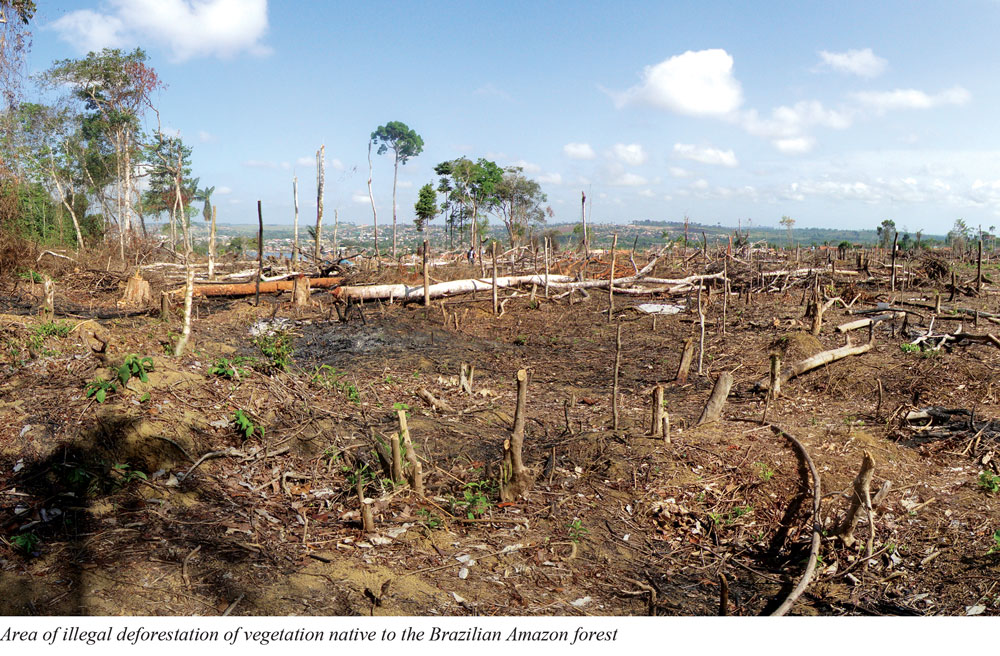
Where the fault lies
The Communication cites a 2016 report by the UN Food and Agriculture Organisation that ‘agricultural expansion for the production of commodities (e.g. soybean, beef, palm oil, coffee, cocoa) drives about 80% of all deforestation specifically in tropical countries, while mining, urbanisation and infrastructure are responsible for less than 10% each’.
Soybean cultivation and beef production have been shown to have a far greater impact on forests, the climate and the environment than the oil palm – which has been a constant target of EU trade and environmental policies. Soybean currently covers an area that is six times larger than that under oil palm. The expansion of livestock production for beef is also a key cause of deforestation.
In Latin America, 70% of the forested land in the Amazon region has been converted to pasture. Recent reports note that up to 80% of deforestation in the Amazon can be attributed to the cattle ranching sector. In 2017, the estimated remaining forest cover in the Brazilian Amazon region was 3,316,172 sq km, or only 80.9% of the forest cover recorded in 1970. At the current rate of deforestation, by 2030, the Amazon rainforest will be reduced by as much as 40%.
Cultivation of feed crops, such as soybean, cover a large part of the remaining 30% of once-forested land in the Amazon. Brazil, the world’s largest producer of soybean, has quadrupled production over the last two decades and is expected to add to this over the next 10 years. Notably, pig farmers in the EU, the world’s largest exporter of pork, depend on Brazilian soybean for feed.
Beef production is considered the biggest driver of tropical deforestation worldwide – being responsible for more than twice that caused by the production of soybean, palm oil and wood products combined. It is estimated that the deforestation for cattle ranching alone releases 340 million tonnes of carbon to the atmosphere annually, equivalent to 3.4% of current global emissions.
The EU is, in part, responsible for the deforestation in Brazil – 20% of Brazil’s beef and soybean exports to the EU is produced on land that was illegally deforested, according to a report published in Science magazine on July 16, 2020.
The study – led by authors from Brazil, Germany and the US – used a special software to analyse 815,000 rural properties and identify areas where illegal deforestation associated with soybean and beef production is taking place in the Amazon and Cerrado – the vast tropical savanna in the centre of Brazil – and how much of these products is for the EU.
The authors also made an estimate of greenhouse gas emissions from deforestation that is linked to soybean and beef exports. They further pointed out the shared culpability of international buyers: “Between 18% and 22% – possibly more – of annual exports from Brazil to the EU are the fruit of illegal deforestation,” said lead author Raoni Rajão, a professor at Brazil’s University of Minas Gerais in Belo Horizonte.
According to official data, a record 3,700 sq km of the Amazon were deforested in the first half of this year, up 25% from the same period in 2019. The report noted ‘the responsibility of all foreign markets in this process’.
Deforestation by the Brazilian agriculture industry ‘destroys the forest to gratify the European appetite’, said the authors, adding that ‘two million [tonnes] of soy[bean] grown on illegally deforested land reaches the EU each year’.
No rhetoric – clearly, the facts speak for themselves.
Uthaya Kumar
Regional Director
MPOC Brussels
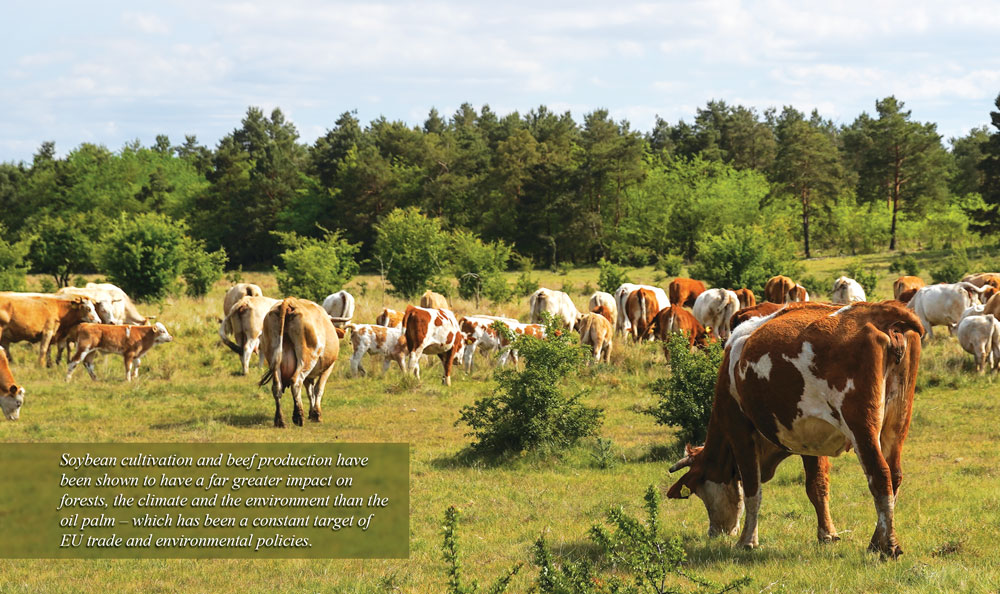
By gofb-adm on Wednesday, July 1st, 2020 in Issue 2 - 2020, Environment No Comments
In December 2018, the European Union’s (EU) updated Renewable Energy Directive (RED II) entered into force. It set higher renewable energy targets for EU member-states and claims to ‘ensure robust [greenhouse gas (GHG)] emission savings and minimise unintended environmental impacts’.1 One element of RED II is the cap it places on the use of biofuels in the transport sector and, in relation, its targeting of emissions from so-called indirect land-use change (ILUC).2
Biofuels are renewable fuels made from plant or animal material. They can be used to replace non-renewable fuels. For example, biodiesel (a biofuel made mostly from renewable vegetable oils) can replace diesel (a fuel made from the non-renewable fossil fuel petroleum). Although biofuels release GHG, they release less than fossil fuels.
ILUC concerns a potential scenario where biofuel production indirectly releases significant GHGs. The scenario has three steps. The first is that demand for biofuel leads to existing agricultural land (producing food and feed crops) being converted to biofuel production. The second is that supply of food and feed crops decreases as a result, but the demand for food and feed crops remains the same. The third is that to meet this unmet demand for food and feed crops, the use of other land is changed – in particular, land with high carbon stock, such as forests or wetlands, is changed into agricultural land (by clearing or burning) releasing a large amount of GHG.3
The EU has expressed its concern that ILUC-related emissions could negate some or all of the GHG savings through biofuel use.4 RED II limits EU members’ ability to factor so-called ‘high ILUC-risk’ fuels into their calculations of renewable energy use in the transport sector to 2019 levels, and gradually reduce that share to 0% by 2030.5 The relevant effect is to set a renewable energy target, but to limit the biofuel consumption in the transport sector that a member-state can take into account when assessing whether it achieves that target. The EU has also implemented regulations setting out its methodology for determining whether a biofuel is associated with a high risk of ILUC.6
In a related press release, the EU notes that the data it relied on ‘show that palm oil has been associated with the highest level of deforestation’ as ‘over the period 2008-2015, 45% of the expansion of palm oil took place in high carbon stock areas’, which ‘is not even by far comparable to other feedstock’.7
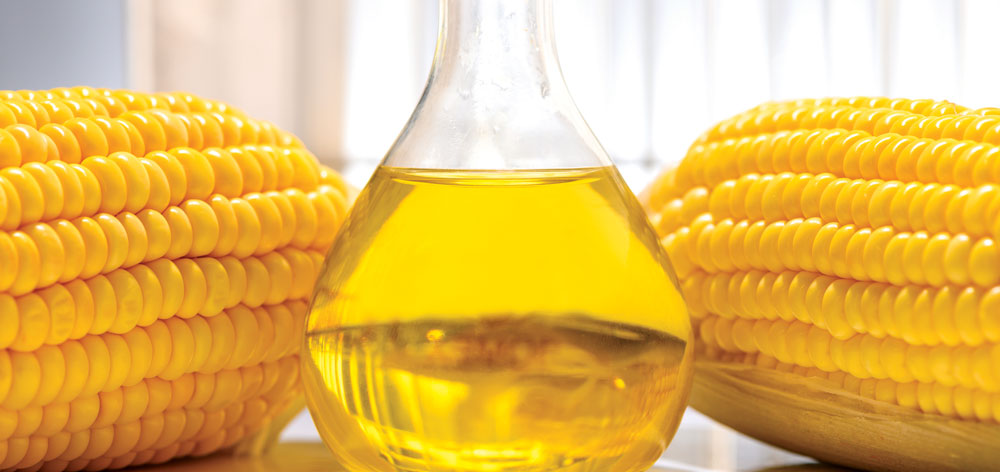
Indonesia and Malaysia – the top two producers of palm oil – have raised concerns in relation to RED II in the Committee on Technical Barriers to Trade at the WTO. On March 13, 2019, Malaysia stated that this will result in ‘arbitrary and unjustifiable discrimination, in favour of other oil crops’, that it is ‘a disguised restriction on international trading of palm oil and its products’, and that the basis for determining high ILUC risk ‘lack[s] scientific data and reliable information’.8
Indonesia stated to the same Committee on July 1, 2019 that RED II will discriminate against biodiesels generated from palm oil vis-à-vis other biodiesel products produced within EU members, and will create unnecessary barriers to trade.9 The EU has stated that RED II complies with its WTO obligations, as it does not single out specific biofuels and does not limit the market access of imported biofuels to the EU.10
On Dec 16, 2019, Indonesia requested dispute settlement consultations with the EU concerning this and other related measures.11 Malaysia is also expected to initiate WTO dispute settlement proceedings,12 but has not yet done so. Consultations are the first stage in WTO dispute settlement; if the parties fail to resolve the dispute in this context, the complaining party(ies) can request that a WTO panel be appointed to hear the dispute.
While the EU is right that the text of RED II and its accompanying regulations make no mention of palm oil, or Indonesia and/or Malaysia (or indeed of any other country), WTO law precludes WTO members from discriminating ‘de facto’ against foreign products, or against products from one or more countries.
To the extent that palm oil-derived biofuels are in a competitive relationship with other food crop-derived fuels – such as the sugar and cereal crops that feed bioethanol production, or the other vegetable oils that are used in biodiesel, which do not have a high ILUC risk under the EU’s methodology – then the inquiry will turn on whether RED II changes the conditions of that competition in the biofuel market by disadvantaging palm oil-derived biofuels.
If RED II does discriminate against palm oil products, the case will turn on whether the EU can successfully make out a defence under the various exceptions in WTO law, such as for measures ‘necessary to protect human, animal or plant life or health’, or measures ‘relating to the conservation of an exhaustible natural resource’.
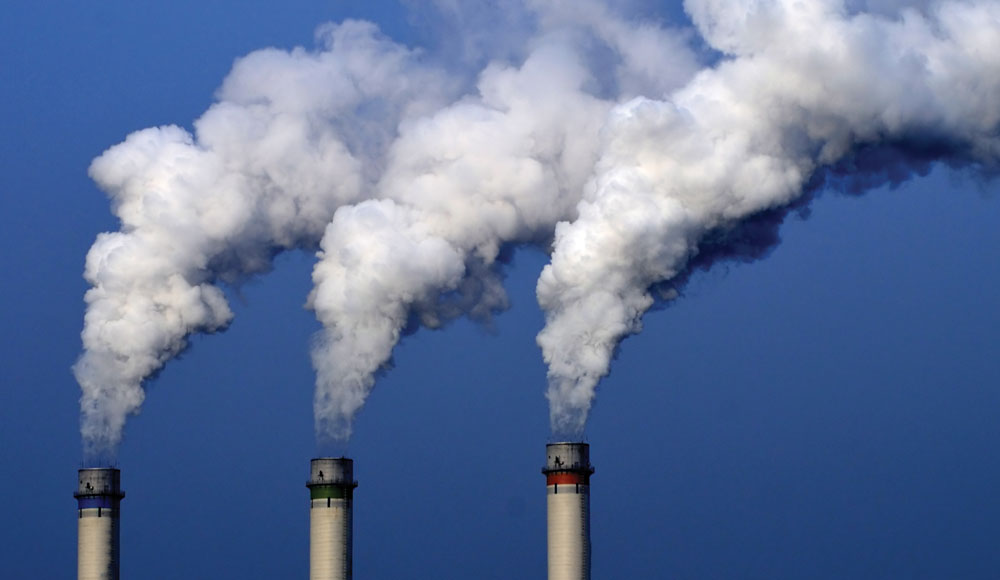
Complexities ahead
Several complexities arise in this respect. First, the EU identifies in RED II not only the reduction of GHG emissions as its objective, but also improving energy security, reinforcing technological leadership in the renewable energy field, and creating jobs and growth.13 Here, the EU would need to demonstrate that RED II addresses GHG emissions; if RED II is successful only in (for example) improving energy security through shifts in production to other feed crops (in particular those predominantly produced in the EU), it is unlikely that the measure will be validated by a panel.
Second, WTO panels and its Appellate Body have been reticent14 regarding whether there is an implied jurisdictional limitation on WTO members regarding measures to address public policy objectives in other countries. In this case, the difficulty would arise because the EU is adopting measures to address GHG emissions in palm oil-producing countries, related to the clearing of land.
This difficulty is compounded by the fact that the Kyoto Protocol limits parties to basing their National Emission Inventories (used to benchmark progress towards UNFCCC goals) on GHG emissions and removals taking place within their territories, and not in other jurisdictions.15 Endorsement of an EU measure that addresses an environmental concern in another country would, therefore, be a big step for WTO law, and a contentious one under international environmental law.
Third, the EU would need to justify the scientific basis upon which RED II distinguishes between palm oil and other biofuels. The EU has set out a review of scientific literature16 that considers the relative expansion of different feed crops; the complainants in any WTO dispute would undoubtedly challenge this. In particular, the EU would be in an awkward position were the complainants to adduce evidence of other feed crops – particular those produced within the EU – that could also be associated with a high risk of ILUC but that are not excluded by the ILUC thresholds identified in the EU’s methodology.
Fourth, RED II identifies whether a product carries a high ILUC risk based on historical data relating to the expansion of global production of a given biofuel into areas with high carbon stock. Although there are limited exemptions for low ILUC-risk biofuels, the measure nonetheless does not appear to accommodate the notion that specific palm oil biofuel may have been farmed sustainably, or on already cleared land, that did not push agricultural production onto other lands.
Put differently, there appears no way of accounting for any disjuncture between a general risk of ILUC and a given consignment of biofuel. This may make it difficult for the EU to demonstrate that RED II is sufficiently flexible to take into account relevant differences in conditions among, or even within, palm oil-exporting WTO members.
Finally, the EU’s justification of RED II would involve argumentation around the relationship between the measure and its intended objective – the required strength of this relationship will depend on the exception(s) that the EU invokes. Part of the analysis is likely to relate to the contribution that RED II makes to its objectives. Here the EU will have to grapple with the likelihood that reducing the extent to which EU members can rely on palm oil will likely shift demand towards other biofuels – all of which are less energy-rich and thus require more land for production.17
Unless the EU can demonstrate that increases in demand for alternative (non-palm oil) fuels will not drive additional land-clearing to account for the lower productivity of those substitutes, it may face difficulties demonstrating that RED II contributes to reducing GHG emissions associated with ILUC.
This dispute comes at a difficult moment for the WTO. The organisation is among US President Donald Trump’s favourite political footballs; it faces an institutional crisis with the expiration of the terms of two of the remaining three Appellate Body members on Dec 10, 2019, such that the organ can no longer hear appeals of panel reports.18
At a time when the legitimacy, and even the ongoing existence,19 of the WTO is being openly questioned, a dispute which (again) tests the limits of WTO law’s ability to sanction a measure that is purportedly directed towards environmental protection will only serve to compound the institution’s mounting difficulties.
Professor Andrew D Mitchell
Faculty of Law, Monash University, Australia
&
Dean Merriman
Senior Manager
Deloitte Australia’s Global Trade Advisory Practice
By gofb-adm on Friday, February 21st, 2020 in Issue 1 - 2020, Environment No Comments
On July 23, 2019, the European Commission (EC) adopted a Communication addressed at the European Parliament, the Council of the EU, the European Economic and Social Committee and the Committee of the Regions on ‘Stepping up EU Action to Protect and Restore the World’s Forests’.
It builds on a number of EU strategies and intends to lay out possible actions to enhance existing policies and take additional action. The Communication follows up on the EU’s 2008 Communication on Deforestation.
The Communication adopts a very broad approach, focusing on five distinct areas of priority and future action:
Importantly, the Communication does not suggest any immediate regulatory action, providing only detailed input for the incoming EC, which can be expected to take further action in the months and years to come.
While the Communication contains several calls for enhanced cooperation and coordination among the EU, third countries, and other actors in industry and civil society, there are also a number of worrying elements that might indicate further discrimination and unilateral action to the detriment of the EU’s trading partners and specific commodities, such as palm oil.
Interestingly, the EC begins by reviewing the EU’s forest cover and its development, noting that the forests had grown from 1990 to 2015 ‘by an area the size of Greece’. Obviously, the EC does not refer to the fact that, historically – prior to logging forests for timber and to make place for agricultural crops – the forest cover in the area of today’s EU had been much more significant. A convenient omission, when calling on other countries to step up their efforts.
The Communication then reviews the drivers of deforestation and identifies the following:
However, the Communication does point out that around 80% of current global deforestation is attributed to the expansion of land used for agriculture. It is then recognised that EU consumption represents around 10% of the global share of deforestation embodied in total final consumption.
The Communication provides an overview of existing EU strategies relating to forests, deforestation and sustainability. Importantly, the EC refers to its efforts of raising consumer awareness with respect to the reduction of the EU’s ‘consumption footprint’, specifically encouraging people to purchase products from deforestation-free supply chains.
The 2008 Communication on Deforestation had put forth the objective to ‘reduce tropical deforestation by 50% by 2020’. Still, the Communication notes that, despite the EU’s ongoing efforts, this objective would likely not be met, leading the EC to conclude that it must ‘step up action and take an even stronger leadership role in protecting and restoring world’s forests’.
Therefore, it can be expected that the EU will continue on its recent regulatory path, which might have additional implications for third countries.

Priority areas and action plans
The Communication details five areas of priority, with corresponding ‘key actions’. These actions are regrouped and further defined in an annex listing the actions to be implemented by the EU, while a second annex lists the recommended actions for EU member-states, industry and civil society.
While the EU’s concerns appear to be sincere, misconceptions and some rather hypocritical elements remain, bringing into question its commitment to fact- and science-based policies.
In fact, part of the Communication appears to be just as ill-informed as the EC’s ‘Report on the status of production expansion of relevant food and feed crops worldwide’. This had accompanied the draft of the EC Delegated Act as regards the determination of high indirect land-use change-risk feedstock – for which a significant expansion of the production area into land with high carbon stock is observed and the certification of low indirect land-use change-risk biofuels, bioliquids and biomass fuels.
The Communication arbitrarily refers to a period from 1990 to 2015, when EU forest cover increased, ignoring the historical events that led to the disappearance of vast forested areas in Europe in the first place.
With respect to the five priorities, a number of issues should be highlighted. As part of the first priority, the Communication refers to the EU’s biofuels policy, notably to the new rules on indirect land use change (ILUC) and the criteria for determining high and low ILUC-risk biofuel feedstock.
In the context of the Delegated Act on ILUC, and the accompanying report, it must be pointed out that the fifth priority focuses on ‘the availability of, quality of, and access to information on forests and commodity supply chains’, clearly implying that the available information and data are not yet adequate and sufficient.
This follows the rather embarrassing statements in the EU’s production expansion report, which often noted that data was ‘not available’ or ‘assumed’. Before important decisions are made, with sometime dire consequences for countries and businesses around the world, the facts should be established with scientific accuracy.
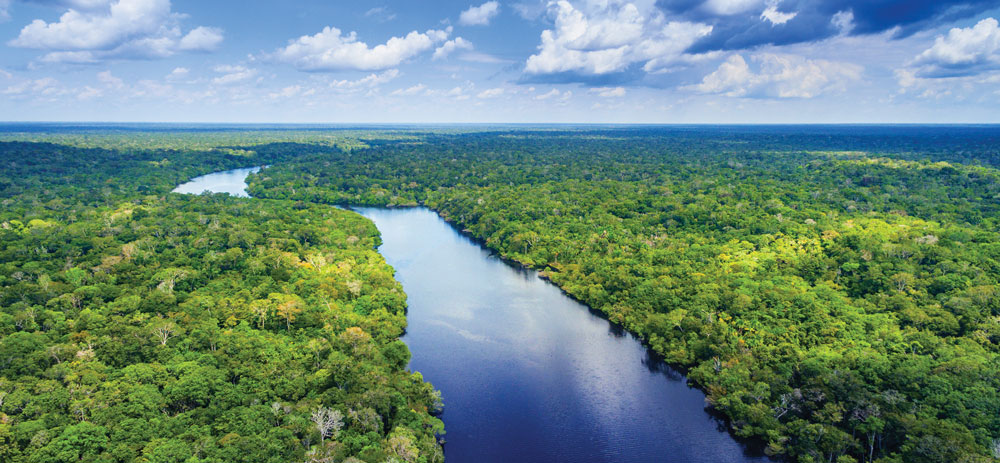
As part of the first priority, which aims at reducing the EU’s consumption footprint on land and encouraging the consumption of products from deforestation-free supply chains, the Communication also refers to the EC’s intention to ‘make it easier for suppliers, manufacturers, retailers, consumers and public authorities, to identify, promote and purchase such products’.
This specifically refers to Regulation (EU) No. 1169/2011 on the provision of food information to consumers, ‘which allows them to distinguish the various vegetable oils contained in products’. This implies that a consumer, by knowing the type of vegetable oil used in a food product, would be able to determine if a product originated from a deforestation-free supply chain, further implying that only certain vegetable oils are to blame for deforestation.
It is not difficult to imagine that this is supposed to refer to palm oil, which has been long denigrated in widespread negative campaigns throughout the EU. Despite the requirement of the EU’s Food Information Regulation, an increasing number of food products is marketed with a label stating that the product is ‘palm oil-free’ – even when the type of vegetable oil used in the product must be indicated on the list of ingredients.
Such claims are misleading and arguably illegal under EU rules. Still, the EU and its member-states have done nothing to halt these campaigns, which generalise against all palm oil; and the reference in the Communication appears to be another endorsement of such deliberate misinformation.
The Communication also discusses the issue of certification and verification, referring to a 2018 study on sustainability standards for palm oil. The Communication notes that guidance should be provided on the credibility of existing sustainability schemes. It calls for standards and certification schemes, which help identify and promote deforestation-free commodities, to be strengthened through, inter alia, ‘studies on their benefits and shortcomings and by developing guidance, including assessment based on certain criteria to demonstrate the credibility and solidity of different standards and schemes’.
However, it is not clear how such studies and guidance documents for the multitude of existing sustainability certification schemes would improve the current situation. Rather, they risk making things even more complex for the consumers. The EC appears to have missed another opportunity to call for the definition instead – in cooperation with the governments of interested countries, particularly the key producing countries – of truly multilateral standards of sustainability.

The second priority refers to working in ‘partnership with producing countries to reduce pressures on forests and to achieve deforest-proof EU development cooperation’, while the third priority refers to international cooperation.
However, in view of recent unilateral EU measures that discriminate against key export products from certain trading partners, such as palm oil, this approach appears as lip service, if not followed by actual undertakings.
Priority Two details the EU’s efforts with respect to the EU Timber Regulation and the EU Forest Law Enforcement, Governance and Trade Action Plan (FLEGT). It is worth noting that Indonesia was the first country to start issuing, on Nov 15, 2016, FLEGT licences for verified legal timber products to be exported to the EU. In the subsequent 12 months, Indonesia issued more than 39,000 licences for shipments exported to all 28 EU member-states, with a total value of more than EUR 1 billion.
If such system works for timber, in terms of enforceability on the ground and recognition by the EU, it is not clear why a similar system could not also work for verifying and certifying sustainable palm oil on the basis of a multilateral standard, to be defined and agreed by the EU and the key palm oil producing countries led by Malaysia and Indonesia.
The Communication is a non-binding information document intended for internal use, but will also surely contribute to public debate. The EC invited the European Parliament and the Council of the EU to endorse it.
On Sept 5, 2019, the European Parliament’s Committee on the Environment, Public Health and Food Safety (ENVI) held an exchange of views with the EC on the Communication; and the ENVI Committee is reportedly planning a hearing on the protection of forests. Reports also indicate that the EC will soon make a legislative proposal.
The focus is on trade and international cooperation while, at the same time, implicitly endorsing discriminatory practices against certain products, such as selected vegetable oils.
It can only be hoped that the incoming political leadership of the EC will focus with sincerity on the elements of cooperation and partnership laid out in the Communication, rather than on continuing the unilateral approach and de facto discrimination against palm oil.
FratiniVergano
European Lawyers
By gofb-adm on Tuesday, September 24th, 2019 in Issue 3 -2019, Environment No Comments
The IPCC, the world body for assessing the state of scientific knowledge related to climate change, its impacts and potential future risks, and possible response options, saw the ‘Summary for Policymakers of the Special Report on Climate Change and Land’ approved by the world’s governments a day earlier in Geneva, Switzerland.
Read more »By gofb-adm on Sunday, March 31st, 2019 in Issue 1 - 2019, Environment No Comments
Palm oil production has often been blamed for deforestation in Southeast Asia. However, this does not do any justice to ongoing conservation efforts in Malaysia by both the authorities and non-governmental entities, as well as regional and international organisations.
Read more »By gofb-adm on Wednesday, June 21st, 2017 in Issue 2 - 2017, Environment No Comments
Sime Darby Plantation (SDP) Sdn Bhd has become Malaysia’s first company to win one of the coveted Edison Awards. This recognises its ground-breaking genome initiative to develop oil palm with a higher yield.
Read more »By gofb-adm on Wednesday, June 21st, 2017 in Issue 2 - 2017, Environment No Comments
A landmark project aims to extend protection over Sabah's rainforests to 30% of the state’s land area by 2025. More than 60 top scientists from leading international universities are spearheading the effort.
Read more »By GOFB on Friday, September 30th, 2016 in Issue 3 - 2016, Environment No Comments
The iconic orang utan is a protected species in Malaysia, found only in the states of Sarawak and Sabah on the island of Borneo. In Sarawak, the known orang utan habitats are located in two main areas.
Read more »